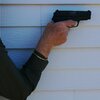I've met women that can stove pipe the most reliable pistols out here, regularly.
Usually it's grip too low
You must have met my wife, but not recently. Up until about 7 or 8 years ago, I swear that woman could make
any semi-auto jam - most often a stovepipe. And here’s the thing - while my wife is pretty darned small (5’1” and maybe 120lbs) and none too muscular, she’s anything but inexperienced with handguns - IF you’re only talking about revolvers. The fact is, my wife was one of Idaho’s top competitors back in her IHMSA days, and she used a Ruger “Super Silhouette” .44 Magnum.
Nevertheless, almost every semi my wife tried over the years would malfunction (as I said, most often a stovepipe) at least once for every magazine full of ammo she tried to run through it. And she flat out got tired of hearing about “limp wristing” from males who could no more out-shoot her with a revolver than fly to the moon. She finally asked a woman, the wife of the proprietor of a local gun shop, if she had any ideas.
.
That was the first time someone didn’t immediately go to “limp wristing” as a reason why a smaller person might be having problems with semi-auto handguns. The woman simply told my wife, “Maybe you’re not gripping it high enough.”
My wife took her old Sig P239 out as soon as she got home, and I don’t think it’s malfunctioned since. Same with her newer Smith .380 EZ Shield - it just runs and runs. However, remembering to grip a semi-auto pistol higher than what comes naturally for my wife still concerns
me a bit. I sometimes wonder if she might not be better off carrying her old Smith .38 snubby for self-defense because if she needs a handgun, she’s probably going to need it in a hurry. And she might not have time to think about gripping it “high enough.”
On the other hand (no pun intended) my wife really likes her Smith Shield, so what she’s doing is just shooting the heck out of it. Hopefully, gripping it “high enough” will eventually become as natural for her as gripping one of her revolvers.







